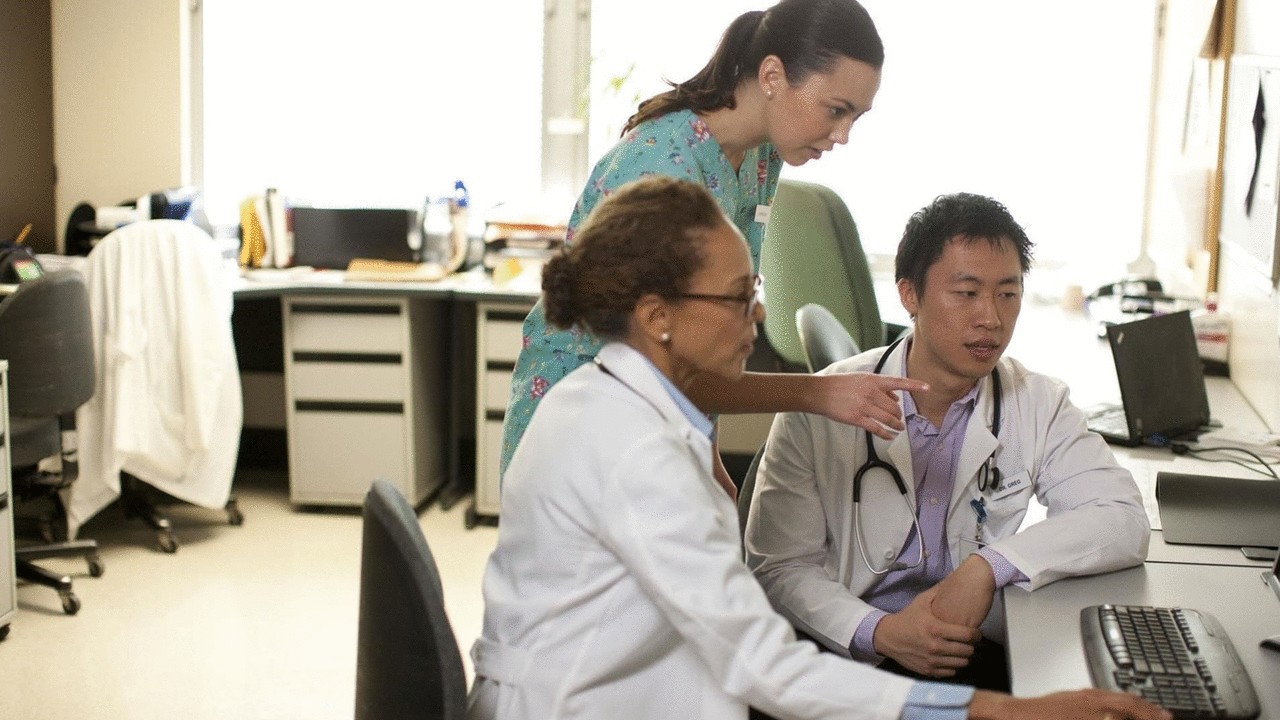
Unblocking data: the only way to get to the heart of Europe’s silent killer
My 46-year-old brother was playing golf when he suddenly passed away almost five years ago. He was in good health for his age, and the cause was by no means uncommon. It was an undiagnosed artery blockage.
Each year, cardiovascular disease (CVD) claims the lives of almost 4 million people across Europe and continues to be the main cause of death in men in all but 12 countries of Europe and in women in all but two countries.
Like so many, CVD only entered my consciousness because of a personal incident. Since then, it has shaped how I approach my work at Microsoft in what is now my 10th year with the company. I learnt very early on that part of the problem starts with how you enter the conversation. When we talk about CVD we often start from a place of severe trauma, following an incident. The regularity of these incidents has become too “accepted,” especially when the availability of data could help us predict and prevent acute incidents altogether – and ultimately save lives.
Over the past five years, I’ve discovered that as a patient passes through the healthcare system, their data often gets blocked along the way. All too often, this data doesn’t flow freely through the care pathway from primary through to acute care, meaning it becomes almost impossible to build an accurate picture of someone’s condition. Addressing this becomes even more critical as we now have more data than ever to help us get ahead of the problem, thanks to the prevalence of fitness trackers, step and calorie counters.
The Hospital District of Helsinki and Uusimaa (HUS) in Finland is one organization working to have data move at the speed of treatment, rather than the speed of paper. The District built an Azure data lake with medical history responsibly collected from 2.8 million patients in Finland over the past 10 years. They have developed algorithms that are fundamentally changing how heart health and other diseases are tracked and managed. Visa Honkanen, Director of Strategic Development says:
“The future vision of HUS entails that data will benefit both the individual and society as a whole. On the individual level, we can help people prevent the onset of medical conditions by identifying potential risks. On a societal level, we can make predictions on the risks affecting whole populations - for example risks of epidemics - enabling forecasting of healthcare needs”.
At the same time, as cities continue to evolve and Europeans live longer, we need to look to Artificial Intelligence (AI) and machine learning as tools to also allow remote monitoring and predictive analytics. When I talk to our partners, they echo this, telling me how preoccupied they are with moving care outside of the walls of the hospital and from a reactive mode to a proactive mode of addressing health. I believe the best way to make change is to build a safe and sustainable platform that enables a functioning ecosystem. With 95% of GP systems built on Microsoft, we’re in a privileged position to help make that happen.
Over in Sweden, we worked with start-up Coala Life, which is using AI and machine learning to help take the burden away from the doctor’s surgery. The company developed a device that allows people to monitor their hearts at homes using AI to listen, analyze and detect heart disease in real time, rather than relying on old and analogue stethoscopes.
These new technologies and many more get people talking more proactively about heart health. This in turn takes the reactive and often trauma-based reactive conversation around CVD to a similar level as the conversation around cancer, where proactivity, prevention and treatment are the key priorities. The discovery of cancer at its earliest point helps to frame a conversation around the hope of preventing its spread, which is something we must now do together for CVD -- a disease that accounts for almost half of all deaths across the continent.
Perhaps what we need more than anything is a mindset shift, whereby people choose to “donate their data” to ensure others can benefit. The more data we have, collected and managed responsibly, the more powerful our technology tools can become in the fight to become proactive and preventative in how we manage health. As we continue to make advances in how to mine these huge volumes of data, perhaps the concept of data donation – like organ donation – will become more important than ever.
We need a ‘5 a Day’ moment where CVD garners mass attention and enters into the mainstream. Only then will we talk more. Ultimately, we can’t just wait for an ambulance if we are to tackle CVD head on. We have to put data at the core and work on sharing it sensibly within the healthcare community and beyond to finally have a chance at stopping Europe’s silent killer.
Director Digital Health Platforms & Partner Ecosystems at Microsoft
6yAnother great example from the Nordics is how to use #Azure based clinical decision support to increase adherence to clinical guidelines. Awesome work done by Cambio Healthcare Systems http://journals.plos.org/plosmedicine/article?id=10.1371/journal.pmed.1002528
Account Executive at Microsoft, National Security & Public Safety
6ySuch a great idea to “donate data” to ensure others can benefit! Concept of organ donation is well known and there are structures supporting that, but data donation would definitely need those as well.
Industry Advisor { Defense and Intelligence { Microsoft
6ywhere crowd algorithms and the platform meet for purpose.
Western Europe SMC Technical Director at Microsoft
6yA very compelling point of view on the impact and prevention a data-led healthcare approach can have. Thanks for sharing Karl
Partner Sales Manager @ AWS
6yA matter close to your heart Karl, thanks for sharing. Hope you're well!